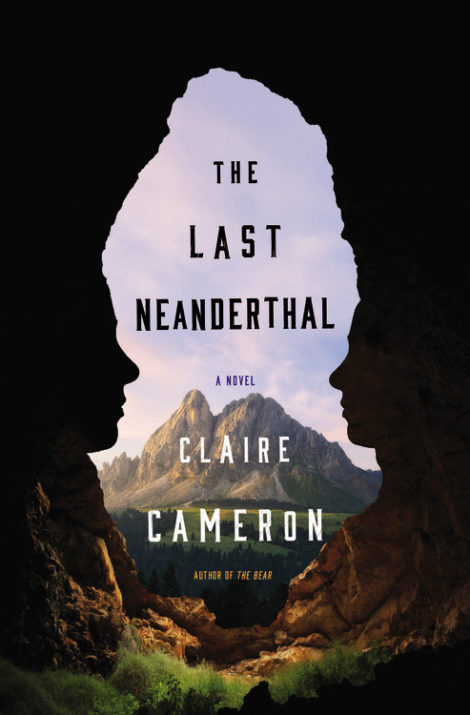
THE LAST NEANDERTHAL
From the author of The Bear, the enthralling story of two women separated by millennia, but linked by an epic journey that will transform them both.
40,000 years in the past, the last family of Neanderthals roams the earth. After a crushingly hard winter, their numbers are low, but Girl, the oldest daughter, is just coming of age and her family is determined to travel to the annual meeting place and find her a mate.
But the unforgiving landscape takes its toll, and Girl is left alone to care for Runt,
From the author of The Bear, the enthralling story of two women separated by millennia, but linked by an epic journey that will transform them both.
40,000 years in the past, the last family of Neanderthals roams the earth. After a crushingly hard winter, their numbers are low, but Girl, the oldest daughter, is just coming of age and her family is determined to travel to the annual meeting place and find her a mate.
But the unforgiving landscape takes its toll, and Girl is left alone to care for Runt, a foundling of unknown origin. As Girl and Runt face the coming winter storms, Girl realizes she has one final chance to save her people, even if it means sacrificing part of herself.
In the modern day, archaeologist Rosamund Gale works well into her pregnancy, racing to excavate newly found Neanderthal artifacts before her baby comes. Linked across the ages by the shared experience of early motherhood, both stories examine the often taboo corners of women’s lives.
Haunting, suspenseful, and profoundly moving, The Last Neanderthal asks us to reconsider all we think we know about what it means to be human.
Read our interview with the author on the Reading Group Choices blog!
- Little, Brown & Company
- Hardcover
- April 2017
- 288 Pages
- 9780316314480
About Claire Cameron
 Claire Cameron‘s novel, The Bear, became a #1 national bestseller in Canada and was long-listed for the 2014 Baileys Women’s Prize for Fiction. Cameron’s writing has appeared in the New York Times, the Globe & Mail, the Los Angeles Review of Books, and Salon. She is a staff writer at The Millions. She lives in Toronto with her husband and two sons.
Claire Cameron‘s novel, The Bear, became a #1 national bestseller in Canada and was long-listed for the 2014 Baileys Women’s Prize for Fiction. Cameron’s writing has appeared in the New York Times, the Globe & Mail, the Los Angeles Review of Books, and Salon. She is a staff writer at The Millions. She lives in Toronto with her husband and two sons.
Praise
One of the most anticipated books of 2017: The Millions, CBC, Chatelaine, Globe and Mail, Maclean’s
“Impressively executed…The contrasting and similar reactions to motherhood are emblematic of the book’s greatest strength—its ability to collapse time and space to draw together seemingly dissimilar species: ancestors and successors, writer and reader.” — Publishers Weekly, starred review
“This is an engaging tale that celebrates the search for life’s meaning and its quotidian nature.” — Bookpage
“Across millennia, Neanderthal and Homo sapiens, ancient girl and contemporary woman, hunter and scientist—all share much in common.” — Kirkus Reviews
Interviews
Read our interview with Claire Cameron on the Reading Group Choices blog!
Essay
Author’s Note
I’ve always been fascinated by Neanderthals, but when I was young they felt as distant as dinosaurs. In school I was taught they were an evolutionary step between the apes and us—hairy, grunting knuckle-draggers who died out because they were inferior, a casualty in our species’ journey from primitive to perfection.
In 2010, a team sequenced the Neanderthal genome and made an extraordinary discovery. Modern humans of European and Asian descent have inherited between 1 and 4 percent of their DNA from Neanderthals. Most scientists agree that this is evidence of relatively recent interbreeding between the two groups. Rather than a more evolved version of Neanderthals, we are close cousins.
But we think of ourselves as the ones who killed off the Neanderthals, not as having sex with them. So how did humans and Neanderthals make contact? We don’t know the answer, but a novelist should take on the risk of imagining one.
In my search for a plausible answer, I researched the new scientific interpretations of Neanderthals. I used my findings as a set of rules to work within, like creative constraints. I also drew on my experience in the outdoors for insight into how survival in the wilderness might have felt more than forty thousand years ago.
But even with the recent findings, there are still many unanswered questions about Neanderthals. As Rose says, a relationship, a feeling, or a glance—it’s the things that don’t fossilize that matter most.
For those who are interested in reading more about Neanderthals and the current thinking about the evolution of our species, I’ve recommended a few of my favorite books below:
Dimitra Papagianni and Michael A. Morse, The Neanderthals Rediscovered: How Modern Science Is Rewriting Their Story (New York: Thames and Hudson, 2015).
Thomas Wynn and Frederick L. Coolidge, How to Think Like a Neanderthal (New York: Oxford University Press, 2012).
Ian Tattersall, Masters of the Planet: The Search for Our Human Origins (New York: Palgrave Macmillan, 2012).
Svante Pääbo, Neanderthal Man: In Search of Lost Genomes (New York: Basic Books, 2014).
Lydia Pyne, Seven Skeletons: The Evolution of the World’s Most Famous Human Fossils (New York: Viking, 2016).
Yuval Noah Harari, Sapiens: A Brief History of Humankind (New York: Harper, 2014).
Sarah Blaffer Hrdy, Mother Nature: Maternal Instincts and How They Shape the Human Species (New York: Ballantine, 1999).
